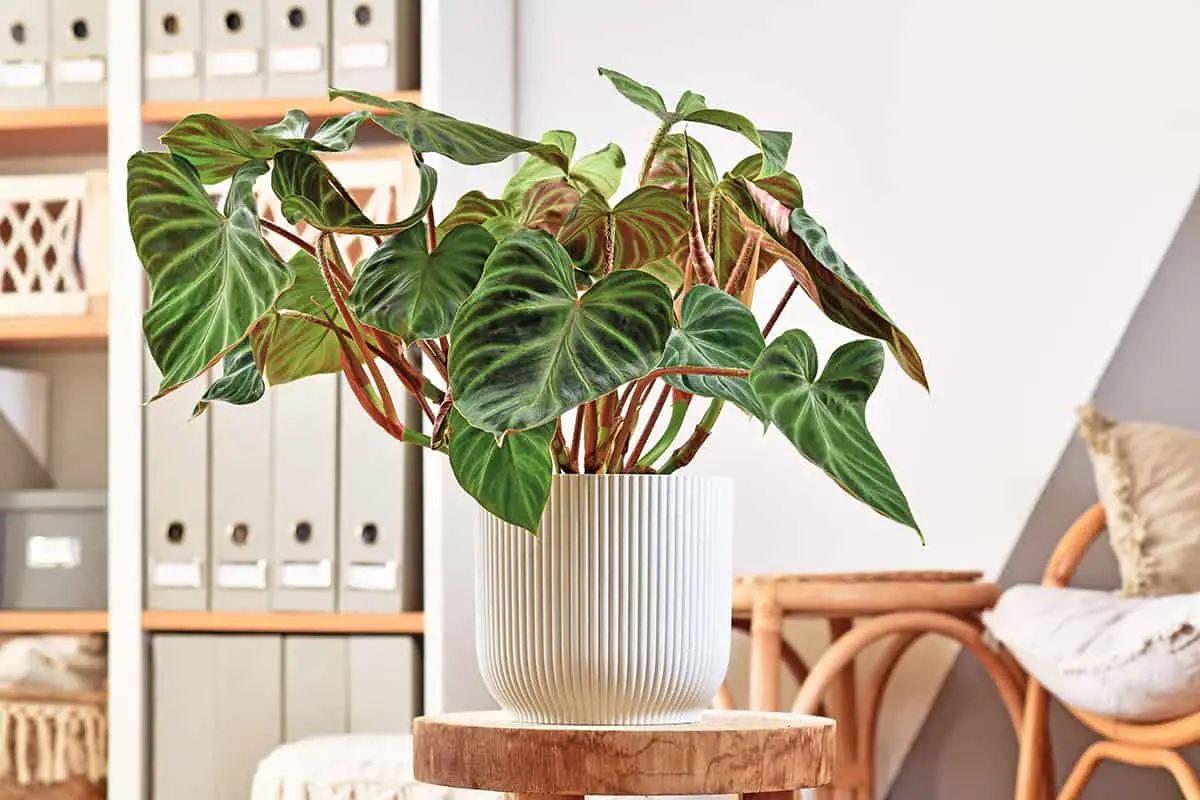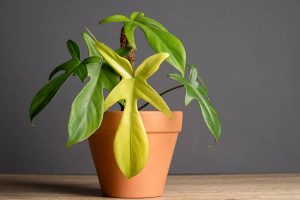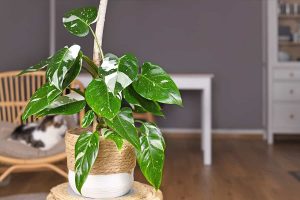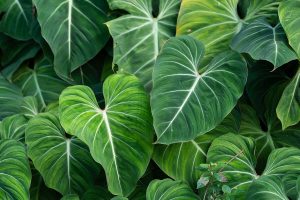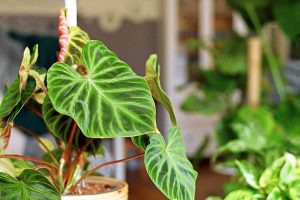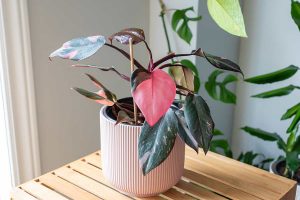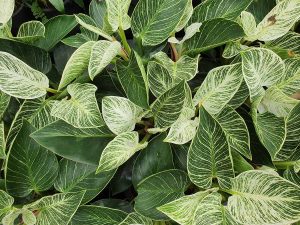If your philodendrons leaves are turning yellow, then this is a sure sign the plant needs some care and attention. If you resolve the issue causing the yellow leaves in good time, then your plant stands a good chance of recovery.
There are a number of issues that can cause philodendron leaves to turn yellow. The most common problems are overwatering or underwatering, inadequate lighting, nutrient deficiency, or pest infestation.
Table of Contents
Common Problems and Solutions for Philodendrons
On the whole, philodendron plants are easy to care for, but if they don’t like the conditions they are being kept in, then they will let you know about it with yellowing leaves. In some cases, the specific issue causing your philodendron leaves to turn yellow might be obvious; for example, if the soil is clearly very dry, then this points to underwatering.
However, often it is more difficult to ascertain what the issue is. Here we help explain the different reasons why a philodendron’s leaves can turn yellow and how to spot which one is affecting your plant.
Unsuitable watering
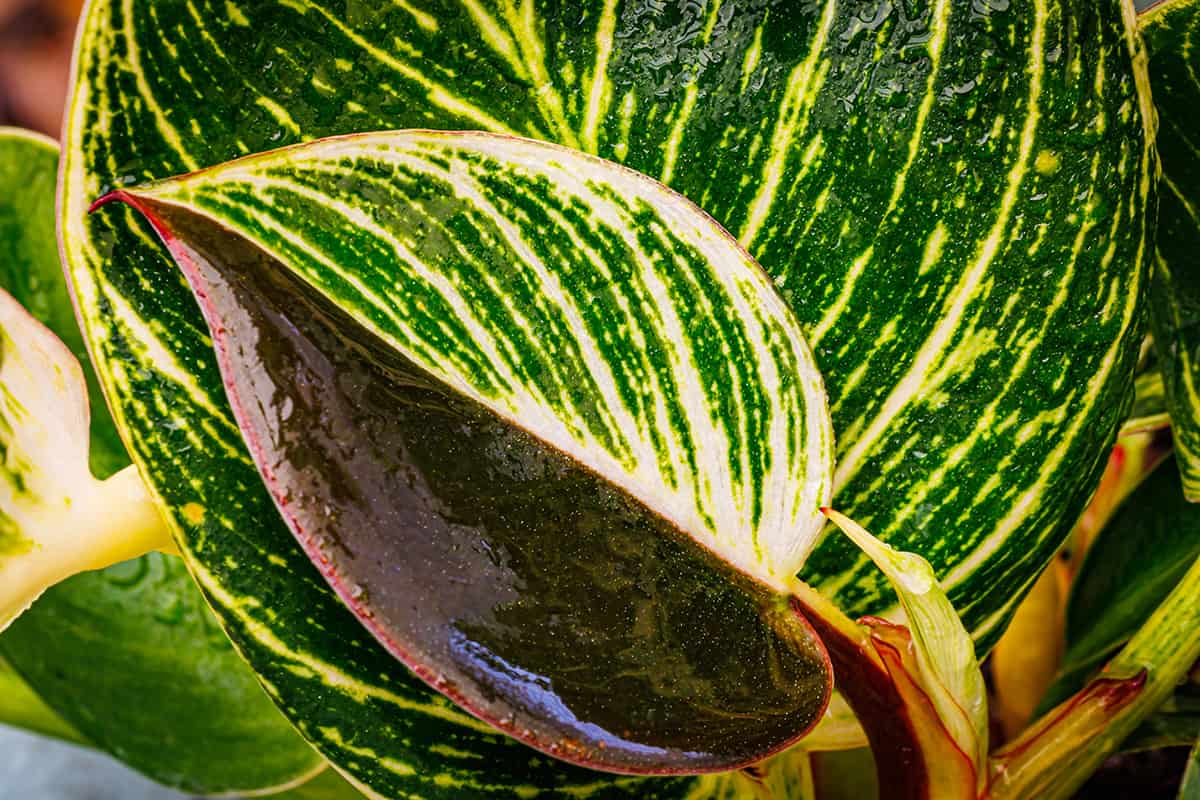
By far, the most frequent reason a philodendron’s leaves turn yellow is due to unsuitable watering. These plants are not very fussy when it comes to the conditions of their soil, but soil that has been allowed to remain dry for extended periods of time, or soil that is overly wet, will affect the health of the plant.
One of the first signs that your philodendron isn’t happy with the way you are watering is when leaves turn yellow.
Typically the tip or the outer edge will turn yellow first, and this will then spread across the entire leaf. Eventually, the yellow leaf will fall off, or it might turn brown before falling off. To figure out if your plant is suffering from unsuitable watering, then you need to assess the condition of the soil.
Lift your plant from its decorative pot and inspect the underneath of the plastic pot. If it is dry all the way down to the base of the soil, then this is a very good indication that your philodendron hasn’t been getting enough water.
Alternatively, identify if your plant has been overwatered by dipping your finger into the soil at the top. It should feel light and moist but not wet and soggy. If mold has started to grow on the soil, this is a sure sign that you have been overwatering the philodendron.
Solution
Alter watering technique
If your philodendron has been under-watered, you need to get moisture to it as soon as possible. Set the plant in a bowl of water for an hour and let it absorb as much water as it needs, then put it back in its usual place. Check the soil every few days by dipping your finger into the top of the soil.
If it feels moist, do not water it. If the top two inches are dry, add more water. The best way to water these plants is by giving them a generous watering and then allowing the top few inches of soil to dry out before watering again, rather than watering little and often.
If your plant was suffering from overwatering, then you need to let the soil dry out before watering it again. If the plant has been overwatered extensively, then it may be suffering from root rot and may not survive.
Inadequate lighting
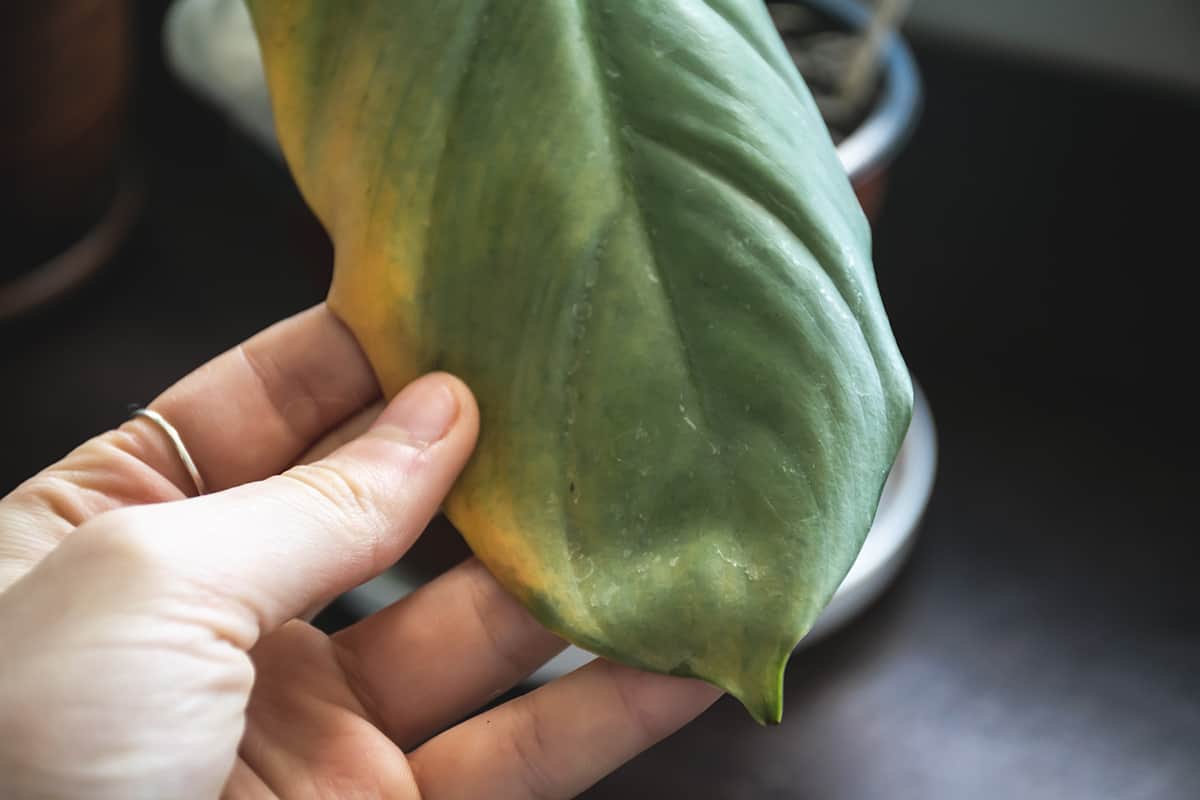
Most types of philodendrons enjoy medium to bright indirect light, though some species will tolerate higher or lower light levels. If your philodendron is situated on a bright windowsill and has yellowing leaves, then this could be caused by scorch.
Too much intense light can cause the leaves to burn and prevent them from functioning properly. If your plant is kept in a dark corner then yellowing leaves could be caused by a lack of light.
Solution
Move the plant
Moving your plant to a spot where it receives a different level of lighting can eradicate yellow leaves caused by over or under exposure. Try out a different location for 4 to 6 weeks and watch out for any improvement. If leaves continue being yellow, then the lighting may not have been the problem.
Pest infestation
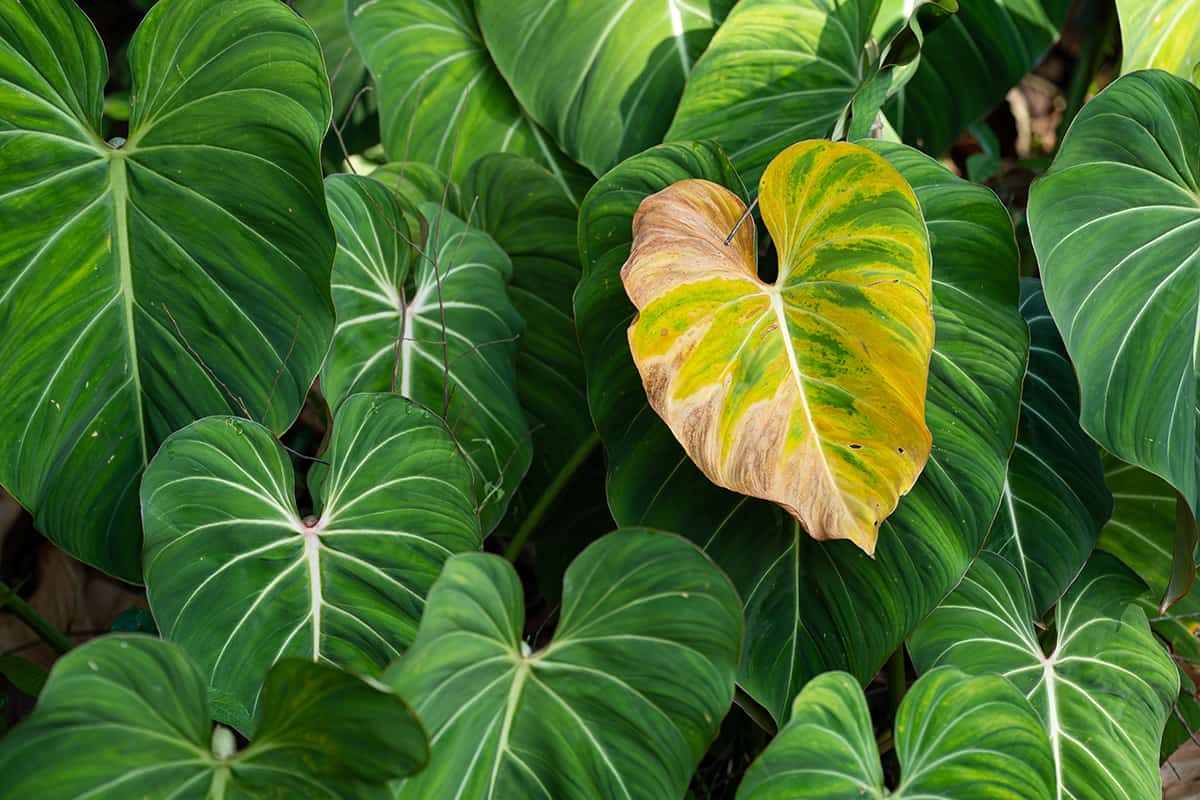
Philodendrons are not prone to pest infestations, but they can happen. Unfortunately, pest infestations can be difficult to detect until it is too late, because the pests are so tiny they aren’t usually noticeable. Keeping a check on the condition of your philodendron’s foliage is the best way to recognize a pest problem early and nip it in the bud.
Yellowing leaves can be a sign of a pest problem, but the way that they turn yellow will look different compared to leaves that are yellow from other causes. When a leaf turns yellow due to its growing conditions, the yellowing will usually start at the tip of a leaf, around the edges, or be evenly spread across the leaf.
However, with a pest problem, you are more likely to see spots of yellow. This is because the pests suck the sap from the leaves, creating a telltale sign. The most common houseplant pests which cause yellowing leaves are spider mites, mealy bugs, scale, and aphids.
Solution
Eradicate pests
The level of infestation is going to dictate your best plan of action in eradicating the pests from your plants, as well as the type of pests you have. For low-level infestations, take your houseplant outside and thoroughly spray it with a hose to wash away the pests, then repeat this daily for a week.
For more severe infestations, hose down the plant and then wash each individual leaf with insecticidal soap. Repeat daily or every few days until all signs of the pests are gone. You can spray the foliage of the philodendron with neem oil to help discourage future infestations, which is a completely natural and safe product that keeps pests at bay.
Nutrient deficiency
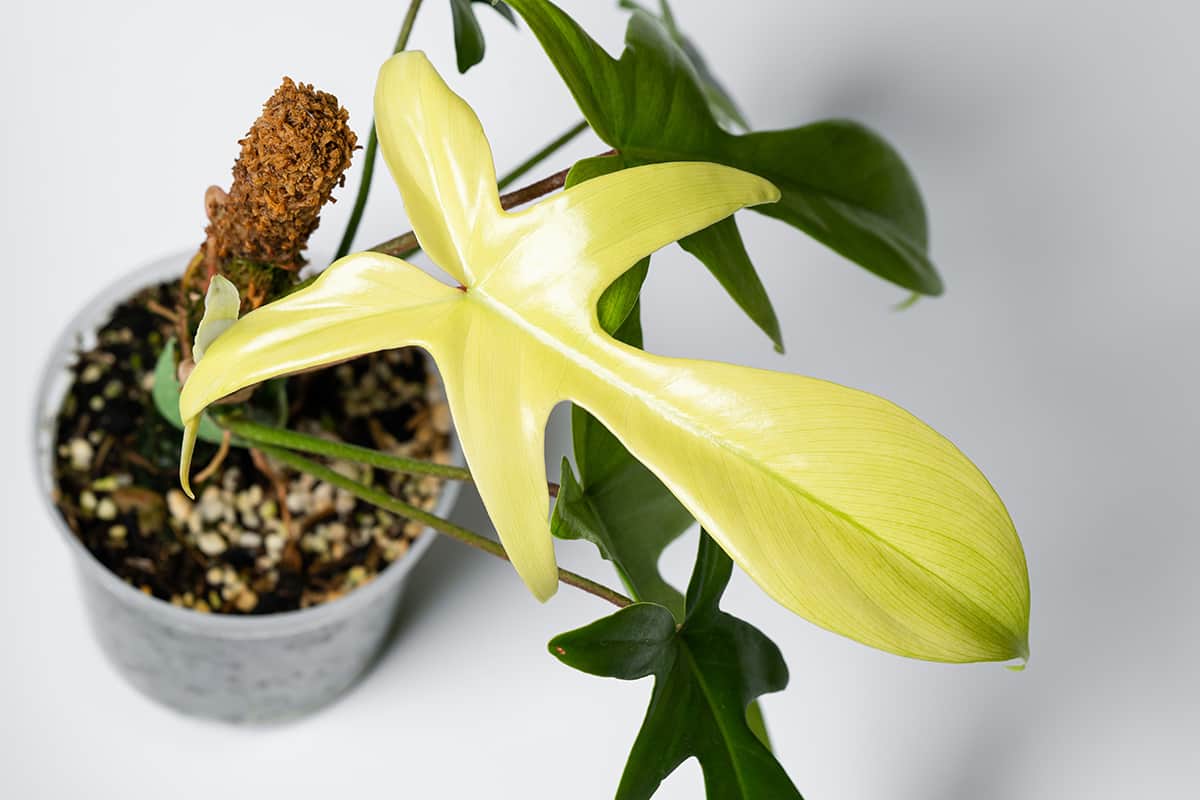
A lack of nutrients in your soil, or a pH imbalance in your water, could be causing your philodendron leaves to turn yellow. The biggest indication of this is when the yellowing occurs along the veins of the leaves.
Solution
Supplement nutrients
If a lack of nutrients is a problem, then, of course, you need to increase the nutrients available to the plant. You can do this in a number of ways. If your philodendrons soil is quite old, then all of the nutrients have probably been sucked from it.
In this case, repot your plant with fresh soil, which will have a higher level of nutrients. Alternatively, top your plant’s soil with nutrient-dense compost, or feed it with a houseplant fertilizer.
Are Yellow Leaves Normal on Philodendrons?
In some cases, yellowing leaves on a philodendron plant are part of the normal life cycle. An occasional yellow leaf is nothing to worry about, especially if it is at the base of the plant. These leaves pass their nutrients back to the plant in order for it to produce new growth and fall off as part of the natural order of things.
You only need to be concerned if multiple leaves all begin to yellow at once or if the yellowing leaves are on the new growth of the plant.
